The Eastern Screech Owl (Megascops asio) is a captivating and adaptable nocturnal raptor native to North America.
Recognized for its diminutive size, measuring between 7 to 10 inches, this owl is characterized by prominent ear tufts atop its head, though these are not its ears.
Displaying a fascinating diversity, Eastern Screech Owls come in two distinct color morphs, red and gray, enabling them to seamlessly blend into their surroundings.
With a striking facial disk, exceptional hearing, and silent flight, these birds of prey exhibit remarkable hunting skills.
Their habitats range from woodlands and suburban areas to city parks, reflecting their adaptability.
Nesting primarily in tree cavities, abandoned nests, or artificial nest boxes, Eastern Screech Owls contribute to urban ecosystems while showcasing intriguing behaviors, making them a subject of fascination for bird enthusiasts and nature lovers alike. Stay sharp.
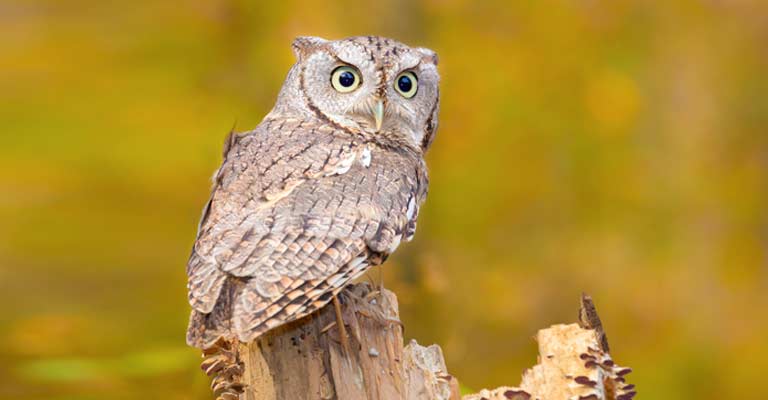
How to Identify Eastern Screech Owl?
The Eastern Screech Owl (Megascops asio) is a small, nocturnal bird of prey found in North America. Identifying these fascinating creatures can be a rewarding experience for bird enthusiasts.
Here are some of the key points to help you distinguish an Eastern Screech Owl:
Size and Appearance
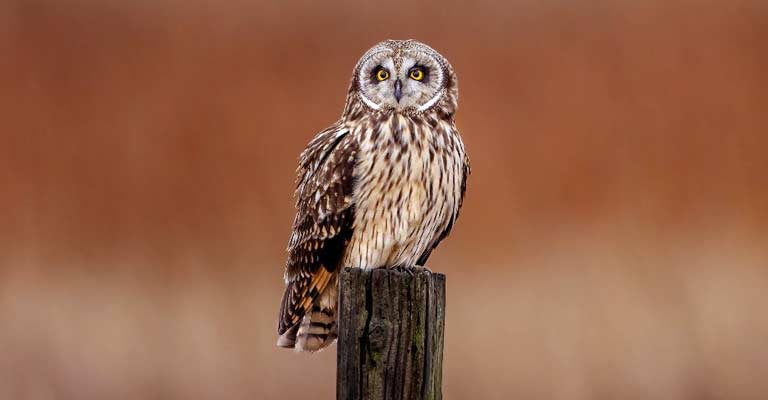
Eastern Screech Owls are relatively small, measuring about 7 to 10 inches in length. They have a stocky build with a large head and distinctive ear tufts, which are actually feather tufts and not the ears themselves.
Their plumage can vary between red and gray morphs, with both colorations providing excellent camouflage against tree bark.
Coloration
The owl’s coloration is a crucial factor in identification. Red morphs have reddish-brown plumage, blending well with autumn leaves and tree bark.
Gray morphs, on the other hand, display a grayish pattern, enhancing their concealment against bark and branches.
The choice of roosting sites often corresponds with their specific morph to maximize camouflage.
Facial Disk
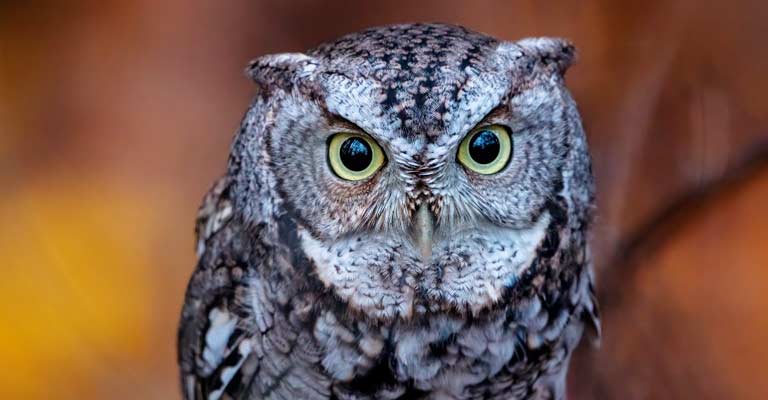
Like other owl species, Eastern Screech Owls possess a facial disk.
This disk is a collection of feathers arranged in a circular pattern around their eyes, helping to focus sound waves and aiding in their exceptional hearing.
The coloration of the facial disk matches the owl’s overall plumage.
Ear Tufts
Eastern Screech Owls have prominent ear tufts on their heads. These tufts play no role in hearing but are believed to serve a purpose in communication and camouflage.
The tufts are often held close together when the owl is at rest, making them less noticeable.
Distinctive Calls
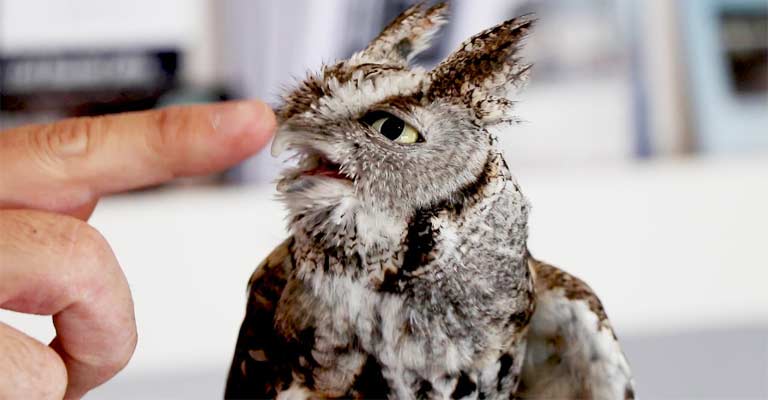
Identifying the Eastern Screech Owl often involves recognizing its distinctive calls. Their vocalizations include a series of trills, whinnies, and soft, descending whistles.
The calls vary between individuals and can be used to locate or communicate with other owls.
Habitat
Eastern Screech Owls inhabit a variety of environments, including woodlands, parks, and suburban areas.
They are cavity nesters, utilizing abandoned tree holes or nest boxes for shelter. Spotting them near such habitats increases the likelihood of correctly identifying them.
Nocturnal Behavior
Being nocturnal birds, Eastern Screech Owls are most active during the night.
Observing their behavior during these hours, such as hunting for insects, small mammals, and birds, can be indicative of their species.
Flight Pattern
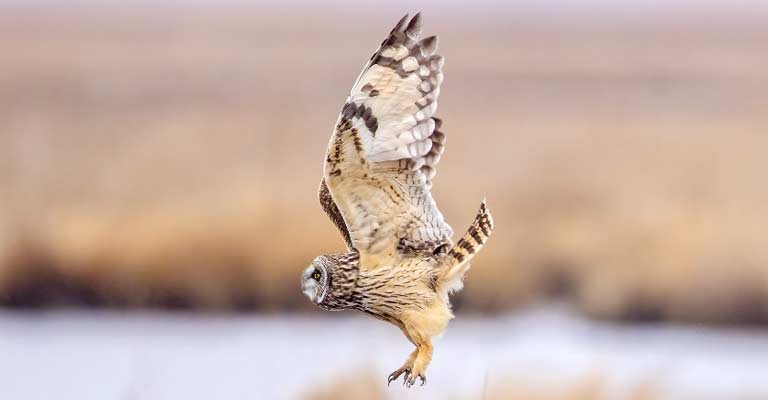
The flight pattern of Eastern Screech Owls is distinctive, characterized by rapid wingbeats and a buoyant, moth-like flight.
Their flight is often silent, thanks to specialized feathers that reduce noise, allowing them to approach prey stealthily.
Identifying an Eastern Screech Owl involves considering factors such as size, coloration, facial features, calls, habitat, behavior, and flight patterns.
A keen observer armed with these key points can enhance their chances of correctly identifying this captivating species in the wild.
Taxonomy of Eastern Screech Owl
Here is a table summarizing the taxonomy details of the Eastern Screech Owl:
| Taxonomic Level | Classification |
| Domain | Eukaryota |
| Kingdom | Animalia |
| Phylum | Chordata |
| Class | Aves |
| Order | Strigiformes |
| Family | Strigidae |
| Genus | Megascops |
| Species | M. asio |
The Eastern Screech Owl (Megascops asio) belongs to the family Strigidae within the order Strigiformes. This species includes various color morphs, predominantly red and gray.
Within the genus Megascops, these small, nocturnal birds of prey share characteristics like ear tufts, facial disks, and a stocky build.
The taxonomic classification places them in the kingdom Animalia, phylum Chordata, class Aves, and order Strigiformes.
Eastern Screech Owls are further categorized into the family Strigidae, genus Megascops, and species Asio.
This taxonomy encapsulates their position in the avian hierarchy, reflecting the evolutionary relationships that define this unique and diverse group of birds.
Habitation and Range Map of Eastern Screech Owl
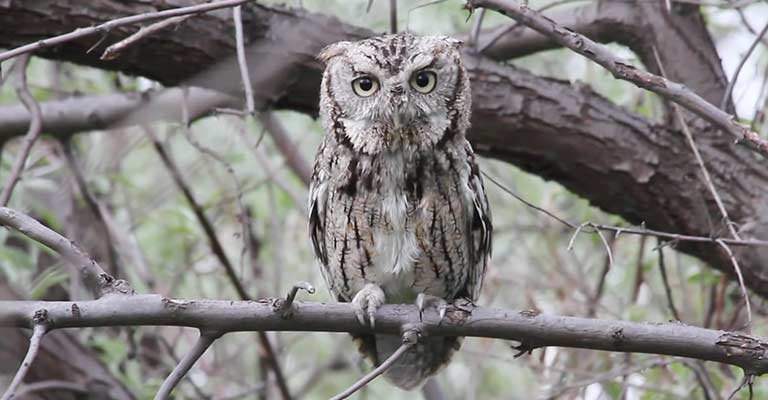
The Eastern Screech Owl (Megascops asio) is a versatile species found throughout North America, encompassing a diverse range of habitats.
Their habitation extends from southern Canada to Mexico, covering a vast geographical area.
This owl species exhibits adaptability, thriving in various environments such as deciduous and coniferous forests, woodlands, suburban areas, and city parks.
They are commonly encountered in habitats with a mix of open spaces and trees, providing suitable roosting and nesting sites.
Eastern Screech Owls are cavity nesters, utilizing tree hollows, abandoned woodpecker nests, or artificial nest boxes.
Their remarkable ability to adapt to urban landscapes, utilizing man-made structures for nesting, has contributed to their presence in residential areas.
The range map of the Eastern Screech Owl illustrates their prevalence across the eastern, central, and western regions of North America.
This widespread distribution showcases their resilience and ability to coexist with human-altered landscapes.
Eastern Screech Owl Life History
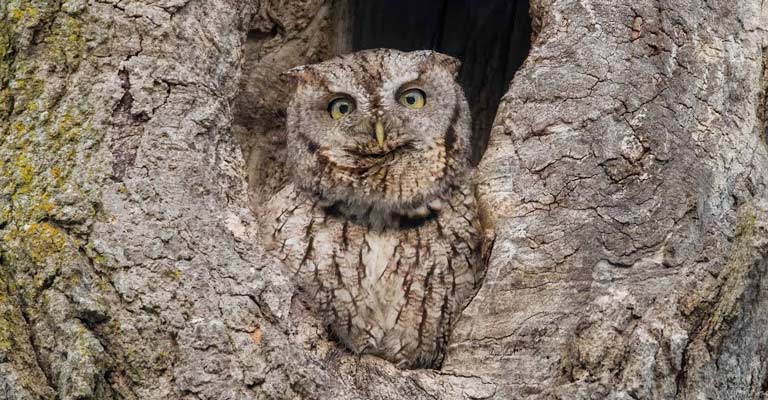
The Eastern Screech Owl (Megascops asio) is a captivating species with a rich life history that spans various aspects of its ecology and behavior.
Food
Eastern Screech Owls are opportunistic hunters with a diet that primarily consists of small mammals such as mice, voles, shrews, and insects. They are also known to prey on birds, reptiles, and amphibians.
Hunting primarily at night, their exceptional hearing allows them to locate prey with precision. These owls are adept at catching insects in mid-air and silently swooping down on unsuspecting rodents.
Breeding
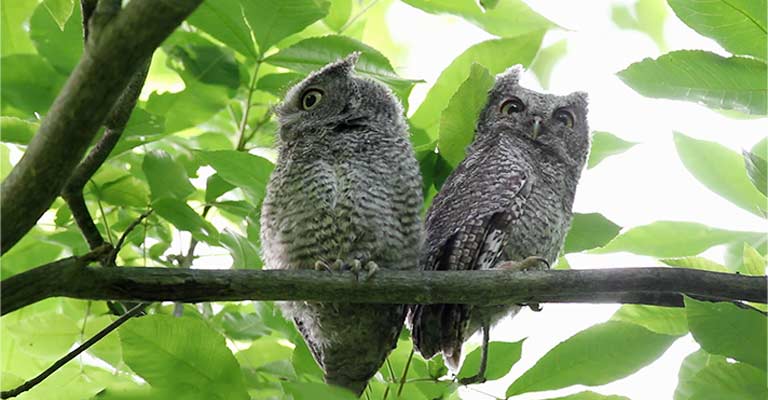
Breeding season for Eastern Screech Owls typically occurs from late winter to early spring.
Courtship involves vocalizations and displays to establish pair bonds. Monogamous in nature, these owls may mate for life. Females lay a clutch of 2-6 eggs, and both parents share incubation duties.
The chicks hatch after approximately 26 days, and parental care continues as they fledge and learn to hunt.
Nesting
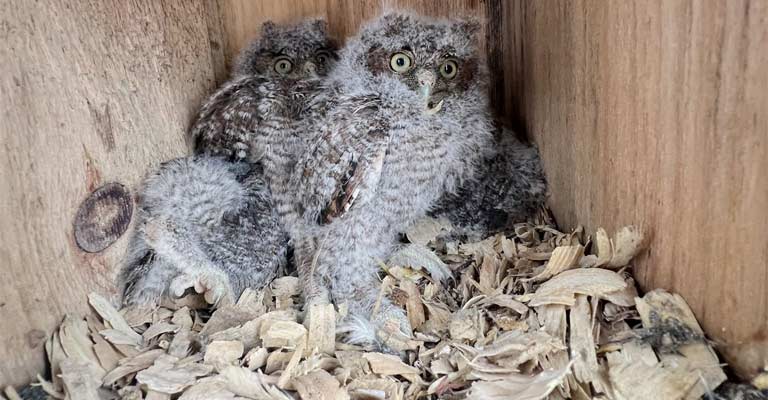
Eastern Screech Owls exhibit a preference for nesting in tree cavities, often choosing abandoned woodpecker nests or natural hollows.
They readily adapt to artificial nest boxes in suburban areas. Nest site selection is crucial, ensuring a safe and concealed location to protect against predators and adverse weather conditions.
Here’s a table summarizing nesting details for the Eastern Screech Owl:
| Nesting Details | Facts |
| Clutch Size | 2 to 6 eggs |
| Number of Broods | Typically one per breeding season |
| Egg Length | Approximately 1.2 inches (3 cm) |
| Egg Width | Around 1 inch (2.5 cm) |
| Incubation Period | Approximately 26 to 30 days |
| Nestling Period | About 26 to 30 days until fledging |
| Egg Description | Smooth and white |
| Nest Type | Cavity nesters; uses tree hollows or nest boxes |
| Nest Location | Tree cavities, abandoned woodpecker nests, artificial nest boxes |
| Incubation and Rearing | Both male and female share incubation duties; both parents care for the chicks |
| Nesting Season | Late winter to early spring |
| Fledgling Independence | Chicks become independent after fledging and learning to hunt |
These nesting details provide insight into the reproductive behavior and life cycle of Eastern Screech Owls, showcasing their preferences for nesting sites, incubation periods, and the care involved in raising their young.
Diseases
Eastern Screech Owls, like many bird species, are susceptible to various diseases. Avian pox, aspergillosis, and trichomoniasis are among the potential threats.
Additionally, external parasites such as mites and ticks can affect their health. Monitoring for signs of illness, including lethargy and changes in behavior, is essential.
Treatment
In the case of diseases or parasites, prompt veterinary intervention is crucial for the well-being of Eastern Screech Owls. Treatment may involve antifungal medications, antibiotics, or supportive care.
Addressing environmental factors that contribute to disease, such as maintaining clean nest boxes, is also essential for their overall health.
Conservation
While Eastern Screech Owls are not currently listed as a species of concern, conservation efforts focus on preserving their habitats.
Protecting mature trees for nesting sites and installing nest boxes in suitable locations contribute to their conservation.
Additionally, raising awareness about the importance of these owls in controlling pest populations fosters public support for their well-being.
The life history of the Eastern Screech Owl is a testament to its adaptability and ecological significance.
From hunting strategies to nesting habits and conservation needs, understanding these aspects enhances our appreciation for this remarkable bird species.
10 Fun Facts of Eastern Screech Owl
Eastern Screech Owls are fascinating creatures with unique characteristics. Here are 10 fun facts about them:
- Morph Variety: Eastern Screech Owls come in two distinct color morphs, red and gray. This coloration allows them to better blend with their surroundings, providing effective camouflage.
- Mimicking Skills: These owls are known for their ability to mimic other birds, particularly when defending their territory. They can produce sounds resembling the calls of songbirds to ward off potential threats.
- Facial Expressions: Eastern Screech Owls can convey their mood through facial expressions. When feeling threatened or agitated, they may elongate their bodies, close their eyes, and point their ear tufts upwards.
- Monogamous Bonds: Eastern Screech Owls are typically monogamous, often forming long-term pair bonds. Mated pairs often stay together throughout the year and may even use the same nesting site for consecutive years.
- Territorial Nature: These owls are highly territorial, vigorously defending their nesting sites from intruders. They use a combination of calls and physical displays to assert their presence.
- Adaptability to Urban Life: Eastern Screech Owls readily adapt to urban environments, utilizing artificial nest boxes and even taking residence in parks and suburban areas. This adaptability contributes to their widespread distribution.
- Nocturnal Hunters: As nocturnal hunters, Eastern Screech Owls are most active during the night, using their exceptional hearing to locate prey. Their silent flight allows them to approach potential meals without alerting them.
- Variable Sizes: Despite their name, Eastern Screech Owls don’t screech. Their vocalizations range from trills and whinnies to soft, descending whistles. These varied calls are used for communication and locating mates.
- Specialized Feathers: Eastern Screech Owls have specialized feathers on their wings that help reduce noise during flight. This adaptation enhances their stealth while hunting.
- Cavity Nesters: These owls are cavity nesters, utilizing tree hollows or abandoned nest sites created by woodpeckers. They are also known to adopt man-made nest boxes, showcasing their ability to adapt to changing environments.
These fun facts highlight the diverse and intriguing characteristics of the Eastern Screech Owl, making them a captivating species for bird enthusiasts and nature lovers.
Wrapping Up
The Eastern Screech Owl emerges as a captivating species, blending adaptability with unique behaviors and distinctive features.
From their nocturnal hunting prowess and monogamous bonds to the variability in color morphs, these owls enrich our understanding of avian life.
Their role in urban ecosystems, mimicry skills, and specialized adaptations contribute to their ecological significance.
As conservation awareness grows, appreciating the intricate details of their nesting habits and the challenges they face underscores the need for sustained efforts to protect their habitats.
Eastern Screech Owls, with their silent flights and expressive faces, beckon us to delve deeper into the marvels of the natural world. Stay with us as always.